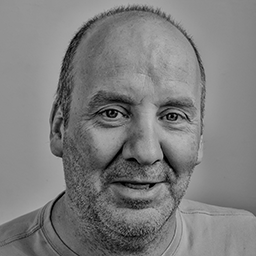Independent primary care physicians are becoming an increasingly rare breed these days. But one Maine doctor claims that automation tools being made available through his eClinicalWorks EHR are helping him thrive as a solo practitioner.
Joel Keenan, M.D., owner of York Primary Care, says that most clinicians think continuing as a small practice is getting more difficult, but he actually thinks it’s getting easier. He recently spoke with Healthcare Innovation about changes he has made to his practice.
Healthcare Innovation: Could you first describe your practice? Then we can go into detail about this the automation tools you use.
Keenan: I have a solo internal medicine practice in York, Maine. I’ve been working for just over 20 years in that capacity, and have been with eClinicalWorks the whole time. I remember in 2004 going down to Westboro, Mass., and signing on after trying out their equipment, and Girish Kumar Navani, the head of the company, running out into the parking lot as I was leaving, just to say hello and thank me for coming in. That’s how small they were then.
First, I should explain I do everything in my practice. My wife is my office manager, but she has a very limited role in terms of what actually gets done in terms of the clinical work. So billing, handling incoming phone calls and faxes, e-mails, sending prescriptions, all that stuff is done by me. So it’s really important to me to be able to do things efficiently, because it’s my time.
Incoming faxes have always been a pain in the neck for me. Until eClinicalWorks got artificial intelligence involved, assigning faxes to patients was a laborious task. There were just a lot of mouse clicks involved. It might sound like a minor thing, but when you’re handling 40 faxes a day, it can add easily a half hour to every day just handling the administrative task of assigning a faxes to a certain category within a certain patient’s chart. With their new software, a fax will come into my inbox, and in the vast majority of cases, their software will have already presumptively assigned it to a patient and to a category within their chart — a lab result, an x-ray result, a consult, a referral. All I’ve got to do is read it and with one click assign it to that patient’s chart, and I’m done. That’s saving me a minimum of a half hour a day, every day, and a lot of grief.
HCI: Are there other automation tools you are taking advantage of?
Keenan: Let me tell you two other things that have made a big difference to me. I mentioned to you that I do my own billing. That used to be a very straightforward process, until explanation of benefit [EOB] forms became electronic. And then it became a real challenge for doctors like me to understand even what insurance companies are paying, because they were no longer mailing that stuff out, and you had to go hunting it down on their websites.
Ironically, the Change Healthcare debacle was a blessing for me, because I was using Change and they were terrible. And so I had to go hunting for another clearing house, and wound up with Waystar, which has changed my life professionally in terms of accounts receivable, because Waystar is just really fluid and efficient, and I’m able to go to their website to find out what all the payers are doing. I can import EOBs from their website and understand what I’m getting paid and what I’m not, and that makes it a lot easier for me to send out accurate invoices.
Once I got connected with Waystar, I reached out to eClinicalWorks and said, ‘Hey, what can you guys do to help me do billing more efficiently?’ They offered me something called Healow Payment. They did two huge things that took it right off my plate right away. I used to mail out statements to everybody. I mean, put them in the envelope, and mail them. Now with one click, that all happens automatically. Healow sends out the statements. And that’s great, but almost as elegant, when patients pay online, those payments get assigned to my eClinicalWorks account automatically. I don’t have to post the EOBs, and that’s huge. The vast majority of my patient payments are paid to my bank, and the payments are posted in their account on eClinicalWorks without me doing anything. It saves me all kinds of time. It has made a huge difference in my accounts receivable.
They also have a feature where you can just press a button and you can dictate into the chart whatever you want in any part of the chart. I type fast so I never really cared about that. But for patients who have complicated things going on, and I want to dictate three paragraphs really quickly. I can do that, and that has saved me some time.
HCI: What about the potential for other AI tools?
Keenan: eClinicalWorks has something called Sunoh.AI, and that’s the software they offer that will allow me and a patient to have a conversation, and Sunoh will infer from that conversation first, who’s talking, and second, what’s the substance and the detail of the conversation, and organize it so that it presents you an option of incorporating a very simplified summary, or a modified, moderately complex summary, or a detailed summary of the conversation you just had with your patient, and make suggestions based on what I’ve said and what the patient has said — referrals or lab orders.
I’ve only used it a few times because I just don’t need it that much yet. When I’m on the phone or having a telehealth visit with a very complex patient who’s got a lot of issues, then it’s really good for me to use it because she and I can just talk for 20 minutes, and I’ve got a really detailed history of present illness if I want that in the chart without me doing anything but clicking okay. As I say, it’s not something I use a lot, but it’s good to know that it’s there.
HCI: Do you talk to colleagues who are feeling like it’s getting harder to stay independent?
Keenan: They think it’s getting more difficult, and I think it’s getting easier. Doctors are really good at being doctors, but they’re terrible businesspeople, and the reason is twofold. One, we didn’t learn a thing about how to run a practice in medical school or residency; and two, our models have all involved working in clinics where there were 2.5 full-time employees per physician. That was just the way it was always done, because for a long time that was feasible. But that meant that we were restricting ourselves to just doing the clinical practice of medicine. Somebody else was going to wind up dealing with writing the note, and someone else was going to do referrals, someone else was going to do prior authorization, someone else was going to do billing, someone else was going to do scheduling. The next thing you know, you’ve got to see someone every 10 minutes or you’re going to go out of business because your overhead is staggering. None of that has to happen, and the reason I say it’s getting easier, not more difficult, is because of what companies like eClinicalWorks are able to offer doctors like me as far as automation goes.
HCI: I have interviewed a lot of primary care docs, and I would say that your situation — where you’re doing a lot of that administrative work yourself — is pretty unusual.
Keenan: It is, and it goes to a fundamental misunderstanding doctors have about how to make money. They think the way to make more money is to see more patients. But for every patient you see, there are 13 encounters before or after the fact related to that visit: a med refill, a phone call with a question about a drug, sending in a prescription, sending a referral, a consultation, reviewing lab and X-ray results, scheduling the next appointment, whatever it is. It really adds up. So you think that instead of seeing 10 patients a day, I’m going to see 20. But you have to get ready for the additional work you’ve just generated by doing that, and you’ve got to pay somebody to do that, if you’re using the standard model, right? So of course, they’re unhappy. They’re going about it all the wrong way. You don’t need to see all those patients. What you need, ironically, is to do more of the work yourself. There’s a market for doctors like me who are willing to work this way. Also, patients really love it. They just love being able to talk to their doctor.







